Succulents are not only a trend these days, but they are also fast becoming an artform. Their popularity is increasing greatly due to the low cost and maintenance required to grow predominantly indoors. They don’t need much to keep them alive besides a few key elements.
Can succulents grow in sand?
Well, succulents can grow in sand. You can purchase them already in a sand-filled pot, but it won’t last as long as in something like coco peat and pebbles. Because, the issue with sand as a growing medium is its longevity.
Sand doesn’t offer much in the way of nutrient value either.
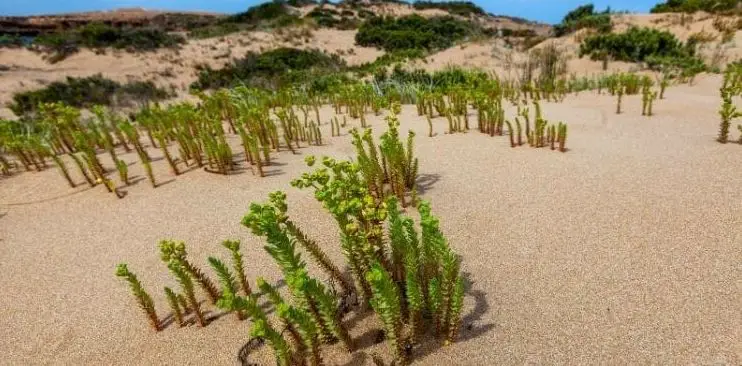
Hopefully, our detailed research on this topic can help you as experiment enthusiasts decorate your indoor area with succulents with sand as a growing medium.
Table of Contents
Can Succulents Grow in Sand? (The Actual Answer)
Succulents can grow in sand. It is common to see succulents potted in various colored sands and many beautiful arrangements. That’s what gives succulents that extra bit of charm. One of the biggest issues with using only sand as a growing medium is its good drainage.
In fact, so good that a plant’s root system can dry out and cause untimely death for the plant. Of course, if you were cautious with watering, you would be much more successful. Also, as a stand-alone growing medium, sand isn’t stacked with as much nutritional value as other sources.
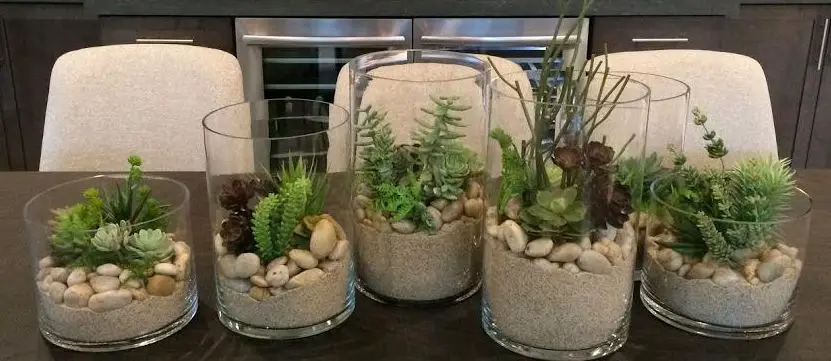
Sand is much more beneficial when mixed with growing mediums such as coco peat, humus or cactus soil. In this case, having the best of both worlds would ensure that your succulents could thrive.
Things To Consider When Growing Succulents In Sand:
There are a few things to consider when growing succulents in the sand. Firstly, there is the dilemma of choosing soil or sand or both. Secondly, can fine sand be used, and how effective is it?
Do succulents need soil or sand?
You can answer this question by first asking another. How long are you looking to grow your succulents? That does sound a little strange, as the intention should never be to intentionally kill a living organism, but it’s an important thought, nonetheless.
Sand is a great short-term alternative for a succulent to grow in. Unfortunately, it stops there, though. Sand just doesn’t have everything a succulent needs to survive long term.
Alternatively, humus-rich soil will help retain water and keep it in the right spot for succulent roots to thrive.
Humus is a clay composite that contains calcium carbonate, magnesium oxide and other important minerals that work on retaining moisture.
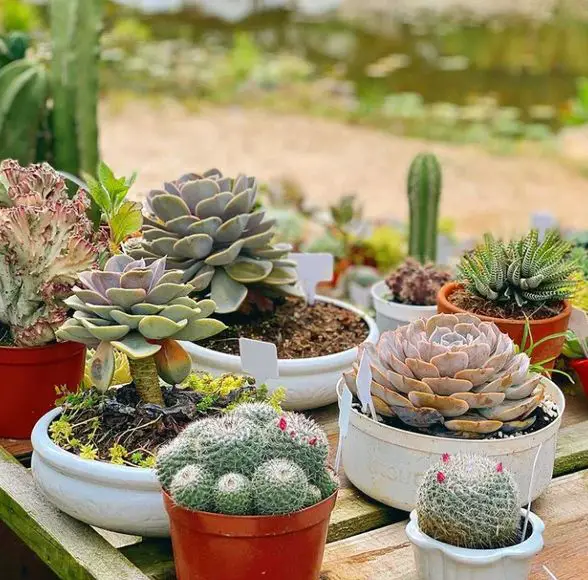
Can I use fine sand for succulents?
As we touched on earlier, sand is ok to use as a temporary growing medium. Furthermore, fine sand is going to offer the same results. Being the resilient plants, succulents can adapt to their conditions, but eventually, they will look for vital nutrients.
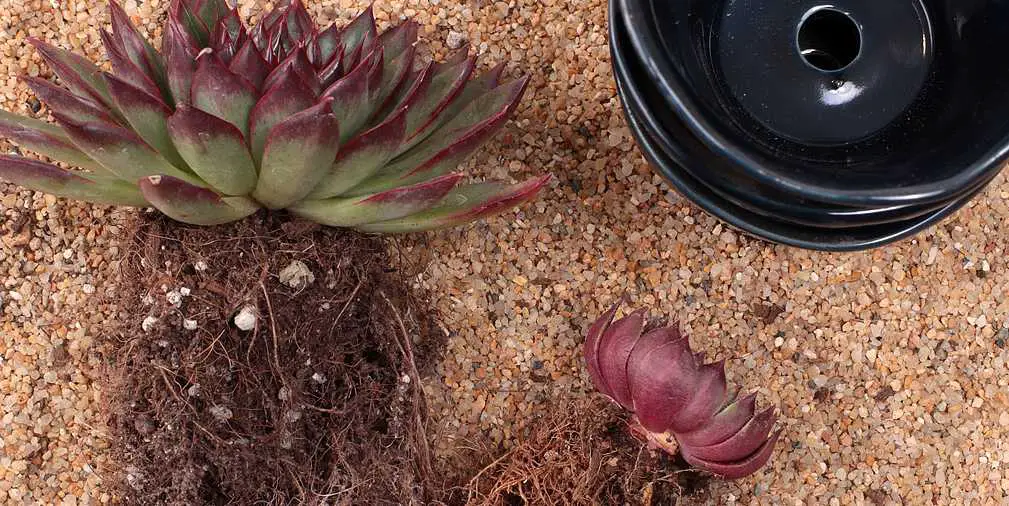
If sand can’t provide them with said nutrients, then, unfortunately, the plant will die from nutrient deficiency. On the other hand, creating a blend of fine sand and more nutrient-rich soil is perfect for your succulent plant.
The drainage capabilities of sand are one of their major benefits. So having that mix of drainage and a water-retentive medium will assist with moisture regulation.
Then you throw the extra nutrients into the equation, and that’s when you will see a smile on your succulent face! As a last resort, using more coarse sand is much more beneficial than fine sand.
What succulents grow in sand?
Although not all succulents grow well in the sand long term, there is a handful that can last a lot longer than others. Let’s look at a few examples in case there are no alternate choices of growing medium other than sand.
Aloe (Aloe Vera)
Aloe Vera can grow in extremely dry conditions, and its resilience allows it to thrive in the sand that has little in the way of nutrients. This succulent is known for its topical healing capabilities.
It can help treat sunburn and acne with its cooling gel, which can be extracted from the inside of its leaves.
The leaves appear jagged and almost resemble teeth. They are fleshy and green, and their flowers are tubular with a yellow tinge.
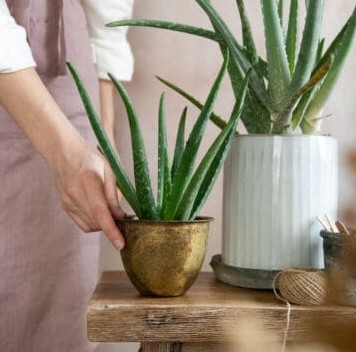
Crown of Thorns (Euphorbia milii)
It is said that the name derived from when Jesus was said to be crucified, and this succulent was used as a crown wreath.
This drought-tolerant succulent shrub is known to thrive in dense sand.
Its foliage is bright green, and its flowers range from orange, red, yellow and pink. It flowers from mid-spring to early winter.
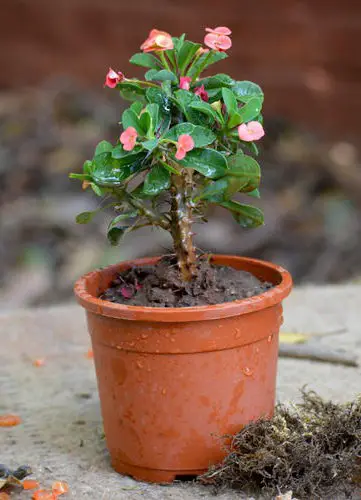
Mother of Millions (Kalanchoe delagoensis)
This succulent can almost be touted as a set and forget. It requires very little moisture and thrives well in coarse sand growing medium.
It contains long, thick, branch-like stems, and the leaves grow from half of the stems to the tip.
The leaves are deep green and plump to touch, with cactus-like spikes on the leaf edges.
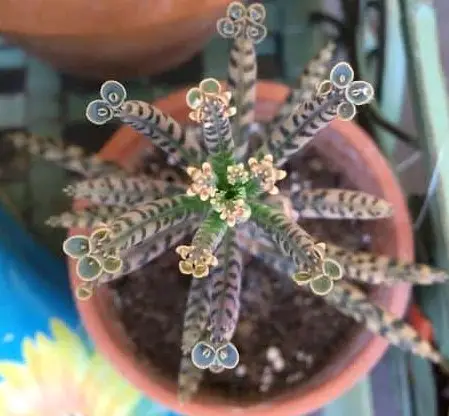
Inkberry (Ilex glabra)
Inkberry is commonly found along stretches of beach.
Due to this fact, it is probably the best succulent to grow using sand as a medium.
It is used for barren, windy, extreme heat weather conditions also. Its foliage is dark green, contains white flowers, and grows small inedible blackberries.
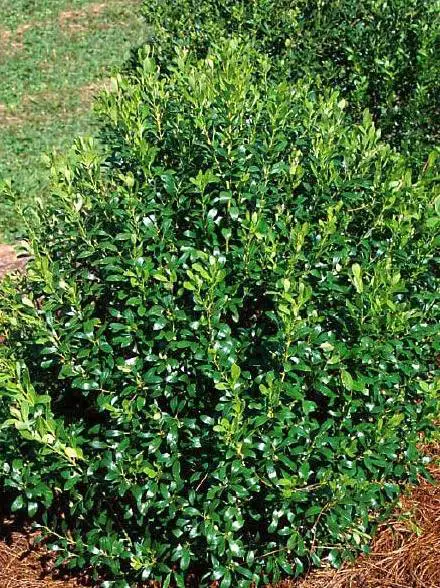
How To Grow Succulents in Sand?
If you want your succulents to thrive, you will need more than coarse beach sand. Creating a hybrid mix of sand and soil is an amazing way to allow your plant an uninterrupted growth spurt.
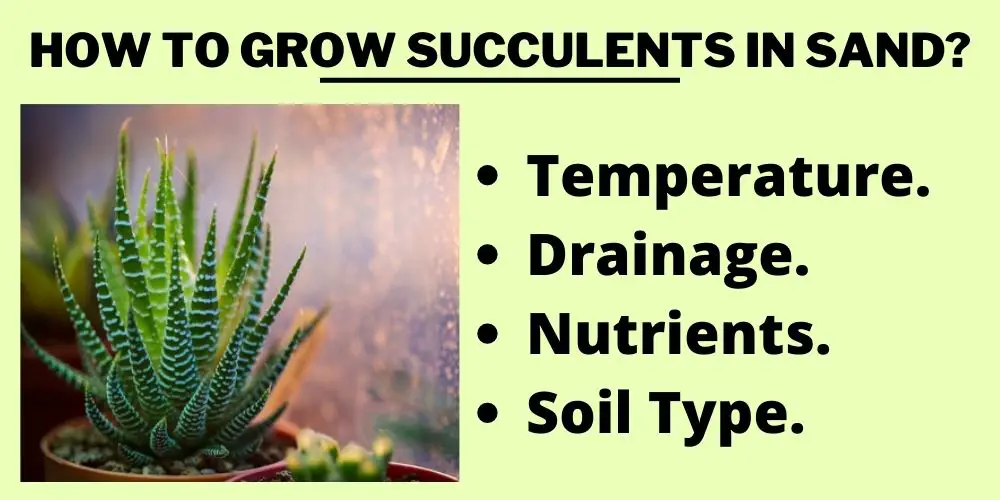
When mixing these 2, you’re giving your succulent both awesome drainage capabilities and a nutrient-rich growing environment. There are a few other elements to consider, though; these include:
Temperature
It’s important to understand that the growing environment of your succulent should simulate that of its origin growing environment. When planting indoors, you can get away with a little more as the temperature can be manipulated.
On the other hand, an outdoor growing succulent will need a lot more attention. Succulents that are known to thrive in colder, more frosty temperatures can do much better in the winter months by shutting themselves down and almost hibernating. These species will struggle if planted in the sand.
Drainage
Coarse sand is much more beneficial for optimal succulent growth. The large grains allow water more space to drain away. On the other hand, fine sand will cause clumping and almost prevent any drainage whatsoever.
The best growing medium for a succulent plant is a mixture of both coarse sand and humus-type soil. The sand will drain, and the humus will hold water and provide ample nutrients. It’s a perfectly balanced blend for your plant.
Nutrients
If you are hellbent on using sand alone to grow your succulents, they will need to get their nutrients from somewhere. There are nutritional supplements that can be purchased that usually come in the form of fertilizers. Either fertilizer or compost is a necessary additive, especially for the growing seasons.
Otherwise, the more reliable alternative is mixing in some soil. Most soils consist of inorganic matter such as rocks, perlite or sand. They also contain valuable organic matter like peat, coir and compost.
Soil Type
The soil type of the succulent you are growing will need to match its natural growing environment. Most succulents like a well-draining growing medium, so sand is a good alternative as long as it offers some form of nutritional value.
Most gardening stores sell good-quality dual mixes, so if you don’t have the resources to create your own, you can always ask your local store for a mix that would suit the species you are trying to grow.
Where to buy coarse sand for succulents?
The best place to purchase coarse sand for succulents is any good garden supplies or home depot. Garden supplies stores often have the right mixtures in a sack or can also be ordered loose.
On the other hand, sand is commonly used in the building industry with brick bases, cement, and even kids’ play areas.
So, home depot is another reliable option. Alternatively, you could always order online via a big chain store such as amazon. They have lots to choose from, and you can check up on the reviews to make sure that the product suits your needs.
How do you take care of succulents in the sand?
When using sand to grow your succulents, there are a few things to be mindful of. These actions or lack of them can be amplified if you go that extra step and use a pot that doesn’t offer any drainage.
You should aim to have a strict repotting, fertilizing and watering schedule.
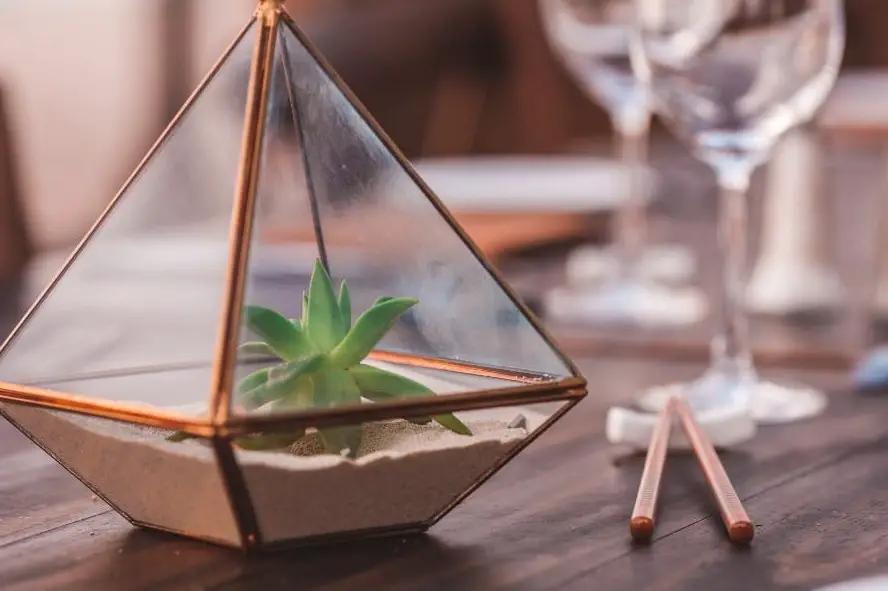
Repotting takes time but can also reduce unnecessary issues to your plants like root rot and fungal disease. Routine fertilizing will give you succulents everything it needs to thrive.
Remember, by not growing in soil, you’re effectively removing your succulent food source, so this action is imperative. Watering is probably the toughest because a succulent growing in the sand can be deceiving.
Sometimes it will feel as if you have watered your plant, but the soil seems dry, then you go to top it up again.
Still, it suffers from root rot because it was only dry at the top, A good way to check the moisture in the soil is to stick either your finger, a skewer or a chopstick into the soil and check to see how much moisture stays on the pore.
If it’s wet, then it has enough or too much moisture. If it’s bone dry, then it will need a top-up!
Frequently Asked Questions (FAQs)
Can I plant my cactus in the sand?
Depending on your cactus species, they can usually thrive quite well in a sand-based pot. The key is to mimic their original environmental conditions. If they are used to arid, windy, dry heat whilst nestled in the sand, they will thrive the same as you plant them.
In general, cacti do pretty well in sand. Some like more porous, pebbly soils that offer better drainage.
Can you grow succulents in beach sand?
Succulents can be grown in beach sand, but only those species that are used to the often harsh conditions. Beaches often have sand that contains higher levels of salt, more intense heat and amounts of light; they also offer less nutritional value.
Crown of Thorns and Inkberry are 2 variants known to be grown in beach sand. Beach sand is often finer and offers much less in the way of drainage.
Conclusion:
So, in short, some species of succulents can grow in sand.
On the other hand, most other succulent species require good drainage, food in the way of fertilizer and water. Sand doesn’t provide any of these.
So, the takeaway is they could live a short lifespan in the sand without any attention, but they can’t thrive there long term.
Ultimately, it’s better to create a mix of sand and soil to give the plant all it needs to survive! We hope that you have enjoyed learning about whether or not succulents can grow in sand. Happy growing!


